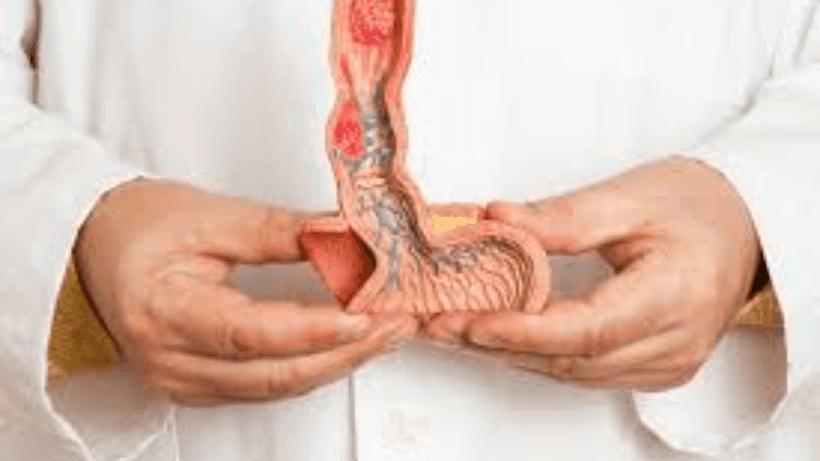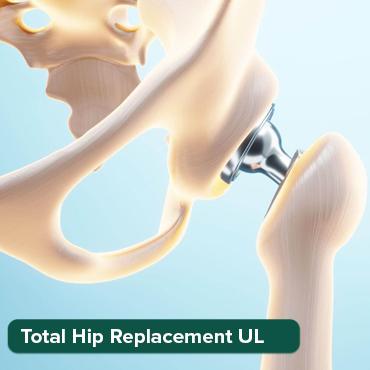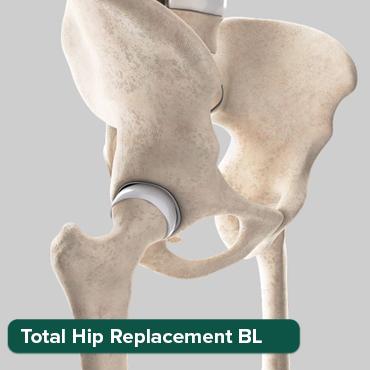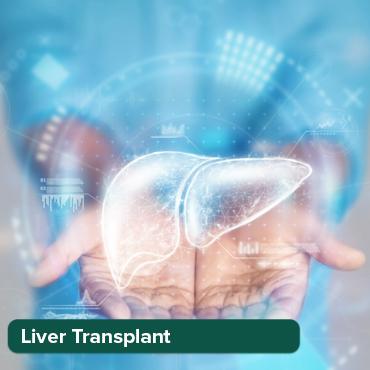
Penile Cancer: Symptoms, Diagnosis, and Treatment
13 Oct, 2023
 Healthtrip Team
Healthtrip TeamPenile Cancer
Penile cancer is a rare but significant malignancy that affects the tissues of the penis. This introduction aims to shed light on the various aspects surrounding penile cancer, offering a foundational understanding of its nature and the necessity for diagnostic procedures.
Penile cancer is characterized by the abnormal growth of cells in the tissues of the penis, often forming a malignant tumor. While relatively uncommon compared to other cancers, its impact can be profound, necessitating a thorough comprehension of its characteristics and implications.
Most popular procedures in India
The incidence of penile cancer varies globally, with certain regions exhibiting higher rates. Understanding the prevalence of this condition is crucial for public health efforts and underscores the importance of early detection and intervention.
Wellness Treatments
Give yourself the time to relax
Lowest Prices Guaranteed!

Lowest Prices Guaranteed!
Purpose and Indications for Penile Cancer Procedures
Reasons for Diagnostic Procedures
The diagnostic procedures employed in penile cancer serve a dual purpose: confirming the presence of cancer and providing critical information for treatment planning. Unraveling these reasons unveils the essential role these procedures play in the overall management of penile cancer.
Who May Need These Procedures?
Determining the suitable candidates for penile cancer diagnostic procedures involves an understanding of risk factors, symptoms, and medical history. This exploration ensures that those most at risk or presenting with concerning symptoms undergo timely and appropriate evaluations.
Diagnostic Procedures for Penile Cancer
Penile cancer diagnosis relies on a combination of clinical assessment, imaging techniques, and biopsy procedures. This section provides an overview of the various diagnostic methods employed in identifying and confirming penile cancer.
I. Biopsy Types
Biopsy procedures involve the extraction of tissue samples for examination under a microscope, aiding in the determination of whether cancerous cells are present. Three primary types of biopsies are commonly utilized in penile cancer diagnosis.
A. Excisional Biopsy
Excisional biopsy involves the removal of the entire suspicious lesion or tumor along with a margin of surrounding normal tissue. This type of biopsy is often employed when the lesion is small and accessible, providing a comprehensive sample for accurate diagnosis.
B. Incisional Biopsy
Incisional biopsy entails the removal of only a portion of the suspicious lesion for examination.
Used when the lesion is too large to be entirely excised or in cases where the location makes complete removal challenging. It helps in determining the nature of the tumor and planning further treatment.
C. Fine-Needle Aspiration (FNA)
Fine-needle aspiration involves using a thin, hollow needle to extract a small sample of cells from the tumor for examination. Particularly useful when dealing with deeper tumors or when a less invasive approach is preferred. FNA can help determine the nature of the lesion and guide subsequent treatment decisions.
II. Imaging Techniques
In addition to biopsies, various imaging techniques play a crucial role in assessing the extent and characteristics of penile tumors.
A. Ultrasound
High-frequency sound waves are used to create detailed images of the internal structures of the penis. Ultrasound is valuable in determining the size and location of tumors and assessing involvement in adjacent tissues.
B. Magnetic Resonance Imaging (MRI)
MRI uses powerful magnets and radio waves to generate detailed images of the internal structures. Particularly helpful in evaluating the extent of cancer spread, MRI provides high-resolution images that aid in treatment planning.
C. Computed Tomography (CT) Scans
CT scans involve X-ray technology to produce cross-sectional images of the body. CT scans are valuable for assessing lymph node involvement and detecting the spread of cancer to distant organs.
Procedure Details
Understanding the specifics of each diagnostic procedure is crucial for both the healthcare team and the patient.
A. Excisional Biopsy Process
Steps:
- Administration of anesthesia.
- Removal of the entire suspicious lesion along with a margin of normal tissue.
- Hemostasis to control bleeding.
- Closure of the wound with sutures.
B. Incisional Biopsy Process
Steps:
- Administration of anesthesia.
- Removal of a portion of the suspicious lesion.
- Hemostasis.
- Closure of the incision with sutures.
C. Fine-Needle Aspiration Process
Steps:
- Local anesthesia at the biopsy site.
- Insertion of a thin needle into the lesion to aspirate a cell sample.
- Withdrawal of the needle.
- Examination of the obtained cells.
D. Role of Imaging in Diagnosis
Imaging techniques, such as ultrasound, MRI, and CT scans, play a crucial role in visualizing the tumor's location, size, and extent. This information guides the choice of biopsy site and helps in treatment planning.
During the Penile Cancer Procedure
Ensuring a safe and comfortable experience during the procedure involves careful consideration of anesthesia options, vital sign monitoring, and the collaboration of the healthcare team.
A. Anesthesia Options
Local, regional, or general anesthesia may be used depending on the nature and extent of the procedure. Anesthesia choices are discussed with the patient beforehand.
B. Monitoring Vital Signs
Continuous monitoring of vital signs, such as heart rate and blood pressure, ensures the patient's safety and allows for prompt intervention if any abnormalities arise.
C. Minimizing Discomfort
Techniques such as local anesthesia and pain management strategies are employed to minimize discomfort during and after the procedure.
D. Role of the Healthcare Team
A multidisciplinary healthcare team, including surgeons, anesthesiologists, nurses, and technicians, works cohesively to ensure the procedure's success and the patient's well-being.
After the Penile Cancer Procedure
Post-procedural care is essential for a smooth recovery and accurate interpretation of results.
A. Recovery Process
The patient is monitored in a recovery area until fully conscious and stable. The duration varies depending on the procedure and anesthesia used.
B. Post-Operative Care
Clear instructions on wound care, medication, and activity restrictions are provided. Follow-up appointments are scheduled.
Latest Advancements in Penile Cancer Diagnostics
Advances in diagnostic technologies play a pivotal role in enhancing the precision and effectiveness of penile cancer diagnosis. The following cutting-edge methods represent the forefront of innovation in this field
A. Molecular Testing
Molecular testing involves analyzing the genetic makeup of cells in the penile tissue.
Purpose:
- Genetic Profiling: Identifying specific genetic mutations associated with penile cancer can aid in personalized treatment strategies.
- Predictive Biomarkers: Molecular testing can reveal biomarkers that predict a patient's response to certain therapies, guiding treatment decisions.
B. Immunohistochemistry
Immunohistochemistry involves using antibodies to detect specific proteins in tissue samples.
Purpose:
- Subtype Classification: Identifying specific proteins can help classify the subtype of penile cancer, providing valuable information for prognosis and treatment planning.
- Biomarker Detection: Certain proteins act as biomarkers, indicating the presence or progression of cancer.
C. Liquid Biopsy
Liquid biopsy analyzes circulating tumor DNA (ctDNA) or other biomarkers present in bodily fluids like blood or urine.
Purpose:
- Non-Invasive Monitoring: Liquid biopsies provide a non-invasive method to monitor the progression or recurrence of penile cancer.
- Early Detection: Detection of ctDNA can occur earlier than traditional imaging, enabling early intervention.
D. Emerging Imaging Technologies
- Positron Emission Tomography (PET) Imaging: PET scans with advanced tracers can offer detailed metabolic information, aiding in precise tumor localization.
- Multiparametric Magnetic Resonance Imaging (mpMRI): Combining different MRI techniques enhances the visualization of penile tumors and surrounding structures.
Purpose:
- Improved Resolution: Emerging imaging technologies provide higher resolution and better contrast, facilitating more accurate diagnosis and staging.
- Functional Imaging: Techniques like PET and mpMRI offer insights into the functional characteristics of the tumor, aiding in treatment planning.
Preparing for Penile Cancer Procedures
Preparation for penile cancer procedures involves thorough consideration of the patient's medical background, informed consent, and adherence to pre-procedure instructions.
A. Medical History and Physical Examination
Understanding the patient's medical history and conducting a physical examination helps the healthcare team assess overall health, identify potential complications, and tailor the procedure accordingly.
B. Informed Consent
Informed consent ensures that the patient comprehends the nature of the procedure, potential risks, and benefits. It is a vital legal and ethical requirement before any medical intervention.
C. Pre-Procedure Instructions
Providing clear instructions before the procedure helps the patient prepare mentally and physically. This may include guidelines on diet, hygiene, and specific restrictions.
D. Fasting Requirements
Fasting before certain procedures, such as surgery or biopsy, is common to reduce the risk of complications like aspiration. Clear instructions on the duration of fasting are essential.
E. Medication Adjustments
Certain medications may need to be adjusted or temporarily stopped before the procedure. This includes blood-thinning medications and supplements that might interfere with the process.
Tips for Self-Preparation
- Learn about penile cancer, diagnosis, and treatments to reduce uncertainties.
- Discuss concerns with healthcare providers for accurate information and support.
- Seek counseling for coping with emotional challenges.
- Prioritize a balanced diet, exercise, and sufficient sleep for overall well-being.
- Adhere to pre-procedure instructions, including dietary restrictions and hygiene practices.
- Talk to your healthcare team about necessary medication adjustments or restrictions.
Risks and Complications:
- The most common risk factor for penile cancer is human papillomavirus (HPV) infection. HPV is a sexually transmitted virus that can cause warts on the penis and other parts of the body.
- Other risk factors for penile cancer include:
- Phimosis (a condition in which the foreskin is too tight to retract over the glans of the penis)
- Poor hygiene
- Smoking
- Lichen sclerosus (a skin condition that can cause white patches to form on the penis)
Prevention Strategies and Risk Mitigation:
- HPV Vaccination:
- Vaccination against Human Papillomavirus (HPV) reduces the risk of HPV-related penile cancers.
- Safe Sexual Practices:
- Practicing safe sex, including the use of condoms, helps prevent the transmission of sexually transmitted infections that may contribute to penile cancer.
- Regular Check-Ups:
- Routine medical check-ups facilitate early detection of potential issues, allowing for timely intervention.
- Early Detection and Intervention:
- Regular self-examinations and prompt reporting of any abnormalities to healthcare providers can aid in early detection and timely intervention.
Outlook and Prognosis
Understanding the staging and prognosis of penile cancer empowers individuals to make informed decisions, guiding treatment choices and shaping their overall outlook.
1. Treatment Options: Diverse treatment approaches, including surgery, radiation, and emerging therapies, offer tailored solutions based on cancer type and stage, ensuring collaborative decision-making with healthcare providers.
2. Survivorship and Quality of Life: Survivorship in penile cancer focuses on thriving post-treatment, addressing physical and emotional well-being, managing side effects, and promoting a high quality of life through supportive care services.
3. Importance of Follow-Up Care: Post-treatment, regular follow-up care is crucial for monitoring recurrence, managing side effects, and addressing emerging health concerns, fostering ongoing communication between patients and healthcare providers.
Navigating penile cancer involves understanding the disease, active participation in treatment decisions, and prioritizing post-treatment well-being. Seeking prompt medical advice and utilizing resources for further information empower individuals to face penile cancer confidently, fostering a sense of community and informed decision-making.
Related Blogs

Mouth Cancer Diagnosis: What to Expect
Get informed about the diagnosis process for mouth cancer

Bladder Cancer Treatment with Radiation Therapy and Immunotherapy
Learn about the combination of radiation therapy and immunotherapy for

Breast Cancer Treatment Options
Explore the various treatment options for breast cancer

Cervical Cancer Diagnosis: What to Expect
Get informed about the diagnosis process for cervical cancer and

Stomach Cancer Treatment Options: Surgery, Chemotherapy, and More
Explore the treatment options for stomach cancer with Healthtrip

Stomach Cancer Diagnosis: Symptoms, Tests, and Stages
Learn about the symptoms, tests, and stages of stomach cancer










